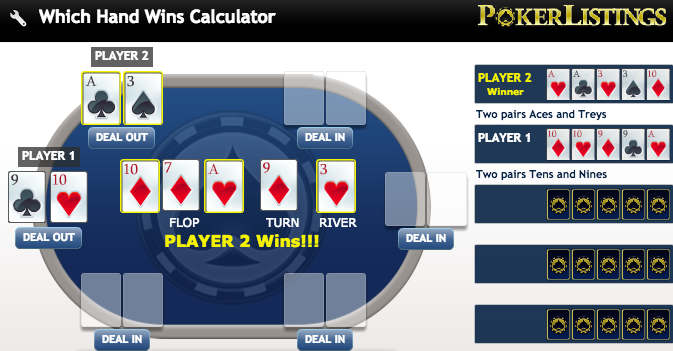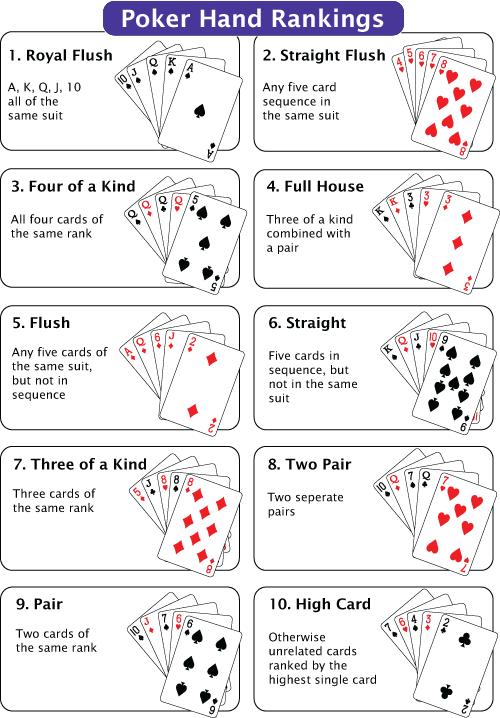How High Card Works In Poker
- How To Play High Card Poker
- High Cards In Poker
- How Does High Card In Poker Work
- How Does Online Poker Work
Basic Rules of High Card in Poker Apart from being the least ranking of all poker hands, this term is also used in another context. In the showdown, the last round of the game, the two players remaining have the same poker hand, then the one who has the highest card within their 5-Card.

- In High-Low split poker games half the pot is awarded to the player with the highest hand and half is awarded to the player with the lowest hand. If 2 or more players tie in the same direction they evenly split that portion of the pot. The high hand is easily determined as it.
- A high card is the very least you can have in the game of poker. If you have no pair, three of a kind, straight, flush, full house, etc., then the highest card in your hand is considered to be decisive. The hand above, in which the best card is a king and there is no other combination of poker hand, is.
Rounds of Betting
- Opening deal- Each player is dealt two cards face down, which are known as hole cards or pocket cards.
- First round of betting- Starting with the player to the left of the big blind, each player can call the big blind, raise, or fold. The big blind has the option to raise an otherwise unraised pot.
- The flop- The dealer burns a card, and then deals three community cards face up. The first three cards are referred to as the flop, while all of the community cards are collectively called the board.
- Second round of betting- Starting with the player to the left of the dealer button, each player can check or bet. Once a bet has been made, each player can raise, call, or fold.
- The turn- The dealer burns another card, and then adds a fourth card face-up to the community cards. This fourth card is known as the turn card, or fourth street.
- Third round of betting- It follows the same format as the second round, but the size of the bets have usually doubled in limit games.
- The river- The dealer burns another card, and then adds a fifth and final card to the community cards. This fifth card is known as the river card, or fifth street.
- Final round of betting- It follows the same format as the second and third rounds.
- The showdown- Using the best five-card combination of their hole cards and the community cards, the remaining players show their hands, with the bettor or last raiser showing first. The highest five-card hand wins the pot. (In case of a tie, the pot is evenly split among the winning hands.)
How To Play High Card Poker
- These rules deal only with irregularities. SeeButton and Blinduse for rules on that subject.
- If the first or second hole card dealt is exposed, a misdeal results. The dealer retrieves the card, reshuffles, and recuts the cards. If any other holecard is exposed due to a dealer error, the deal continues. The exposed card can not be kept. After completing the hand, the dealer replaces the card with the top card on the deck, and the exposed card is then used for the burncard. If more than one hole card is exposed, this is a misdeal and there must be a redeal.
- If the flop contains too many cards, it must be redealt. (This applies even if it is possible to know which card is the extra one.)
- If the flop needs to be redealt because the cards were prematurely flopped before the betting was complete, or the flop contained too many cards, the board cards are mixed with the remainder of the deck. The burn card remains on the table. After shuffling, the dealer cuts the deck and deals a new flop without burning a card.
See Explanations,discussion #2, for more information on this rule. - If the dealer turns the fourth card on the board before the betting round is complete, the card is taken out of play for that round, even if subsequent players elect to fold. The betting is then completed. The dealer burns and turns what would have been the fifth card in the fourth card's place. After this round of betting, the dealer reshuffles the deck, including the card that was taken out of play, but not including the burn cards or discards. The dealer then cuts the deck and turns the final card without burning a card. If the fifth card is turned up prematurely, the deck is reshuffled and dealt in the same manner.
See Explanations,discussion #2, for more information on this rule. - If the dealer mistakenly deals the first player an extra card (after all players have received their starting hands), the card is returned to the deck and used for the burn card. If the dealer mistakenly deals more than one extra card, it is a misdeal.
- If you are playing the board, you must so declare before you throw your cards away; otherwise you relinquish all claim to the pot.
I've had visitors on this site searching for information on 'how to count cards in poker' so I thought I would write about the subject.
First of all, there's no way to count cards at poker in a way similar to blackjack since the deck is shuffled after every hand and what happened in the hand before has nothing to do with what's going to happen in the next hand.
Card counting at poker must therefore mean the same as 'how to count outs,' or in other words, 'how to count cards that you can win with.' Counting outs in poker consists of calculating all the unseen hands, the hands with winning potential and then comparing those groups between each other.
High Cards In Poker
So how does counting cards at poker work? Say you're on the turn with a flush draw and you wonder how likely it is for you to hit a flush on the river. There are 52 cards in a standard card deck and 13 cards of each suit. Since you're on a flush draw, you have four of the same suit meaning you'll need to hit one of the remaining nine cards to get your flush. And since you're on the turn, you've already seen four cards (on the board) plus two cards (in your hand) meaning there are 46 cards to be seen.
How Does High Card In Poker Work
A simple calculation shows us that 9/46 = 0.20 so you have a 20% chance to hit a flush on the river. (This way of calculating works for the most popular poker game, Texas Hold'em.)

Not 'double-counting' outs is important to remember when learning how to count cards in poker.
For example, say you have 6-5 of hearts and there are 2-7-8-J on the board with two of them being hearts. Now you have a flush draw and a straight draw. How many outs do you have? 46 cards unseen, nine flush outs and all the fours and nines so eight straight outs combined (since there are four cards of each value). Nine outs plus eight outs means you'd have 17 outs altogether. However, two of your straight outs are flush outs at the same time (4 of hearts and 9 of hearts) which means subtract two of your total outs in order to not to double-count leaving you with 15 outs in total.
How Does Online Poker Work
Other games: